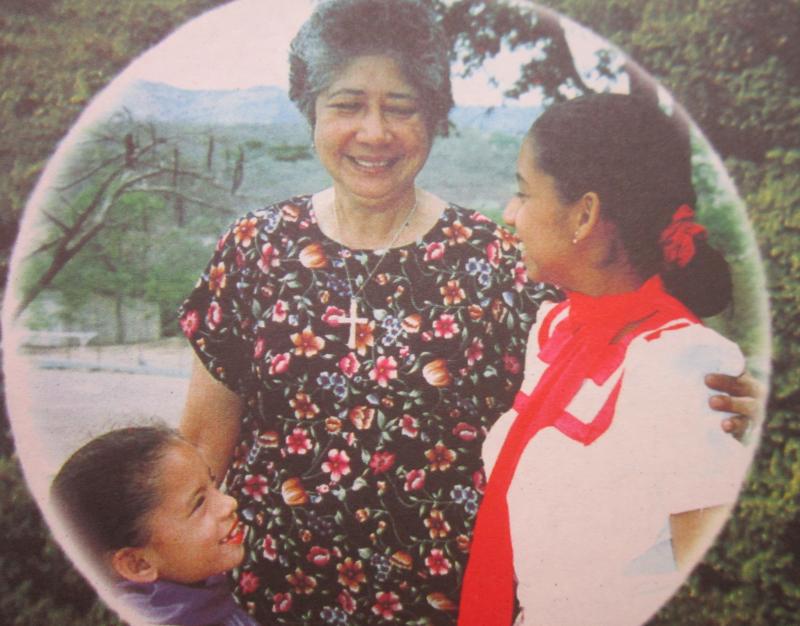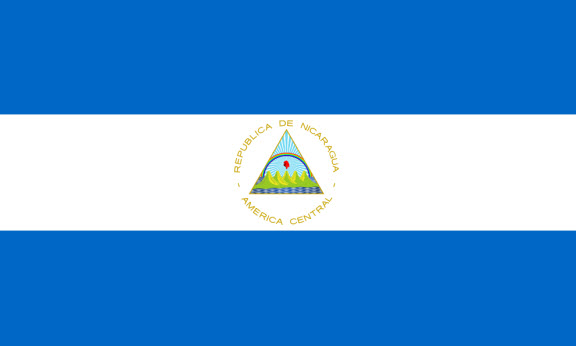Nicaragua Still Hopes
By Sr. Margarita Jamias, MM
Nicaragua, land of lakes and volcanoes, is a small Central American country the size of Massachusetts. It has a population of 4 million people. Like the Philippines, it is tropical and has similar flora and fauna. The church has been deeply involved in the people’s struggle for liberation. Sr. Margarita Jamias, MM from Masinlok, Zambales, educated in Maryknoll College and Ateneo, tells us of the struggle to promote Basic Christian Communities in Nicaragua.

Painful History
I was assigned to Nicaragua in 1974. The country was barely recovering from the big earthquake which devastated Managua, the capital of Nicaragua. I have been privileged to accompany the Nicaraguan people through three very different phases of their history: the Somoza Dictatorship and the Sandinista Revolution, the Sandanista period and the Contra War, and now the neo-liberal period under Violeta Berrios de Chamorro and Arnaldo Aleman. With the advent of neo-liberalism in Nicaragua, the situation of the poor has become worse. Unemployment is nationwide. From 50% to 75% of the population live under the poverty line, making Nicaragua the poorest country in the American continent.

Maryknoll Sisters
In Condega, a rural area 190 kms. north of Managua, there are five Maryknoll Sisters doing a variety of ministry: herbal medicine and acupuncture, adult literacy, loans to farmers, work with women and the small Bible reflection groups. My particular work is with the women and the Bible reflection groups. I give courses to women on gender issues, Feminist Theology, women in the Bible.
Women the Mainstay
In Nicaragua more than a third of all households are headed by single mothers, the sole support of the family. Even in households headed by couples, sometimes the women support the family because the men are jobless. Women work as domestics and other service jobs or as factory workers, oftentimes Free Trade Zones with miserable salaries and tough working conditions. Reyna Rivera works from 7:00 AM to 5:00 PM hand rolling cigars for export. She earns the equivalent of $ 1.50 a day. This is the same salary the women receive whether they work in coffee processing plants or harvesting tobacco. Yes, tobacco has replaced the basic crops in the northern part of Nicaragua as big companies have offered the small farmers a more ‘profitable’ income from their land. The farmers know that eventually tobacco will exhaust their fertile land but his is the alternative they take for “sure” income as the companies provide seeds and fertilizers.
Art of Quilting
In 1966 I started teaching the art of quilting to women. They were very enthusiastic about it so that now 210 women have learned the art. Forty women have formed a Collective. They make cushions, bedsheets, bags, and placemats. They export products to the US and Germany through visiting solidarity groups in Nicaragua. The income from their quilting helps the families survive.
Difficult times for the BCCs
The Nicaragua people have deep faith. Popular religiosity such as processions and devotions to Our Lady are part of their spiritual life. The Eucharist is central to their faith. After Vatican II and Medellin, Basic Christian Communities flourished in Nicaragua. The Church took the preferential option for the poor, a similar platform to that of the Sandinista Revolution. The slogan “Between Christianity and the Revolution there is no contradiction” was taken to heart and Christian action. But under pressure from the U.S. the forces of conservatism are again in vigor in Nicaragua. A new initiative called the “New Evangelization” is replacing Basic Christian Communities in places. The challenge for us is to keep alive a Theology incarnated in the experience of the people, most of whom are financially poor. We reflect with women and their experience; we continue to explore experiences of the Sacred in our relationship with God, with others and with creation.